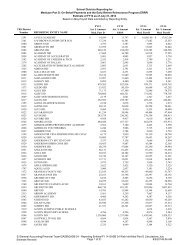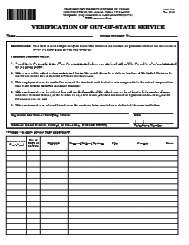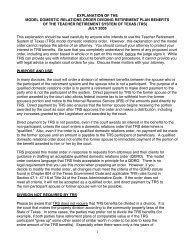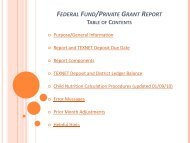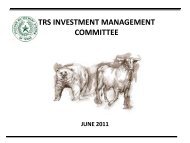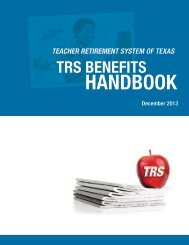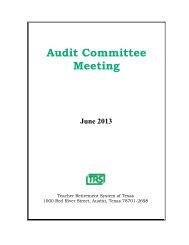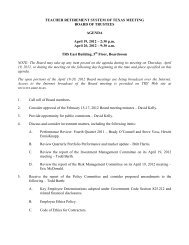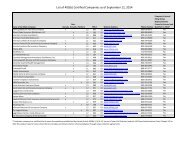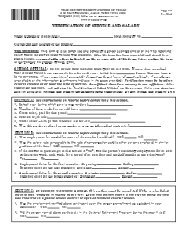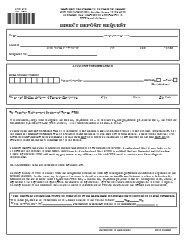TRS 2011 Comprehensive Annual Financial Report
TRS 2011 Comprehensive Annual Financial Report
TRS 2011 Comprehensive Annual Financial Report
Create successful ePaper yourself
Turn your PDF publications into a flip-book with our unique Google optimized e-Paper software.
TEACHER RETIREMENT SYSTEM OF TEXAS COMPREHENSIVE ANNUAL FINANCIAL REPORT <strong>2011</strong><br />
Notes to the <strong>Financial</strong> Statements<br />
depreciation) is exchanged, rather than just the cash flows. Investment managers or sponsors of Real Asset Funds investments in<br />
commodities are limited to swaps and instruments that constitute a security that is underlain by a financial instrument as opposed to a<br />
physical commodity.<br />
Option Contracts<br />
An option contract provides the right, but not the obligation, to buy or sell a specific amount of a specific security within a predetermined<br />
time period. During fiscal year <strong>2011</strong> and at August 31, <strong>2011</strong>, respectively, the system entered into and held no option contracts.<br />
G. DEPOSITS AND INVESTMENTS RISK FACTORS<br />
Deposits and investments of state and local governments are exposed to risks that have the potential to result in losses. GASB<br />
Statement No. 40, Deposit and Investment Risk Disclosures - an amendment to GASB Statement No. 3 updated the custodial credit risk<br />
disclosure requirements of Statement 3 and established more comprehensive disclosure requirements addressing other common risks<br />
of deposits and investments such as credit risk, concentration of credit risk, interest rate risk and foreign currency risk. The required<br />
disclosures related to these risks are presented on the following pages.<br />
Custodial Credit Risk – Deposits<br />
The custodial credit risk for deposits is the risk that, in the event of bank failure, the government will not be able to recover deposits<br />
or will not be able to recover collateral securities that are in the possession of an outside party. The system does not have a formal<br />
deposit policy for custodial credit risk. The State Treasury has specific guidelines for cash and deposits that are maintained in the State<br />
Treasury.<br />
The deposits in the bank in excess of the insured amount are uninsured and uncollateralized. As of August 31, <strong>2011</strong>, the balance<br />
of uncollateralized cash in U.S. and non-U.S. banks for investments pending settlement was $151,906,367.<br />
Custodial Credit Risk – Investments<br />
The custodial credit risk for investments (including exchange traded investment derivative instruments) is the risk that, in the event<br />
of a failure of the counterparty, the government will not be able to recover the value of investment or collateral securities that are in the<br />
possession of an outside party. The system does not have a formal investment policy for custodial credit risk.<br />
Short-Term investments totaling $5,112,558,134 are held by the custodian’s agent in an investment pool not evidenced by a security,<br />
and are not exposed to custodial credit risk. All other investments (including exchange traded investment derivative instruments) are<br />
registered in the name of Teacher Retirement System or in the name of the system’s custodian which was established through a master<br />
trust custodial agreement. The securities are held by the custodian in the name of the system.<br />
Any cash collateral received associated with investment derivative activity is invested in an agent managed pool that is not evidenced<br />
by securities that exist in physical or book entry form. At August 31, <strong>2011</strong>, the system held $30,300,000 associated with investment<br />
derivative activity.<br />
At August 31, <strong>2011</strong>, the deposits with broker to open futures contracts in the amount of $505,261,049 were uninsured and<br />
uncollateralized.<br />
Credit Risk of Investment Derivative Instruments and Debt Securities<br />
The credit risk for the system’s investments in debt securities, Short-Term Investment Funds, and over-the-counter investment<br />
derivative instruments in asset positions is the risk that an issuer or other counterparty to an investment will not fulfill its obligations.<br />
The system’s investment policy establishes tracking error limits that are intended to reduce the tracking error of the asset class.<br />
The system does not have a formal credit risk policy relating to its investments in Short-Term Investment Funds. For over-the-counter<br />
(OTC) derivatives, any counterparty in a transaction with <strong>TRS</strong> must have a credit rating of at least A- (Standard & Poors or Fitch) or<br />
A3 (Moody’s) or better at the inception of the contract. All OTC derivative transactions, including those managed through Agency<br />
Agreements, must be subject to established ISDA Master Agreements and have full documentation of all legal obligations of <strong>TRS</strong> under<br />
the transactions. All ISDA Master Agreements provide that netting applies. To minimize the system’s exposure to loss related to credit<br />
risk, the system may use collateral arrangements to mitigate counterparty credit risk. The system has negotiated thresholds for each<br />
counterparty above which collateral must be posted. The net market value of all over-the-counter derivative positions, less collateral<br />
posted, for any individual counterparty may not exceed $500 million. The net market value of all over-the-counter derivative positions,<br />
without consideration collateral, may not exceed five percent of the total market value of the fund. The system’s investment policy<br />
clarifies that termination of the transaction is allowed. Repurchase transactions and triparty repurchase transactions may not exceed<br />
five percent of the market value of the total investment portfolio, including cash and cash equivalents, unless those transactions are<br />
covered by a third-party indemnification agreement by an organization that bears a long-term NRSRO credit rating of A- or better and is<br />
enhanced by acceptable collateral. A securities lending agent must be an organization rated A- or better by a NRSRO.<br />
The system’s rated counterparties on investment derivative instruments in an asset position, and rated debt investments as of<br />
48 FINANCIAL SECTION



